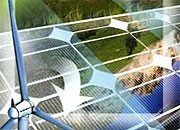This substantial growth will be driven by Brazilian government initiatives focusing on the expansion of its generation capacity, especially in the wind, biomass, and solar energy segments, in order to meet increasing power demand, says research and consulting firm GlobalData.
According to Chiradeep Chatterjee, GlobalData’s Senior Analyst covering Power, reasons for the predicted surge in demand involve increasing trends in both Gross Domestic Product (GDP) and population, as past consumption trends have demonstrated.
Brazil’s annual consumption increased from 331.6 Terawatt hours (TWh) in 2000 to 505.5 TWh in 2014, at a Compound Annual Growth Rate (CAGR) of 3.1%. By 2019, annual consumption is expected to reach 538.4 TWh.
Chatterjee explains: “Brazil’s economy is one of the fastest growing in the world, with GDP growing from $263.8 billion in 2000 to $401.5 billion in 2014 and driving increased consumption.
“Brazil generates power from a diverse range of sources, with hydropower accounting for the majority of the country’s requirements. Although a large amount of hydropower capacity has been developed in Brazil, with a cumulative installed capacity of 89 GW in 2014, additional capacity remains to be developed.”
However, while hydropower is the largest source of electricity in Brazil, its relative share will decline from 66.9% of total installed capacity in 2014 to 54.7% by 2025.
GlobalData also states that that both wind and biomass technologies have been developed substantially in Brazil over recent years, and there is significant potential for further development.
Chatterjee continues: “Onshore wind capacity is expected to increase at a CAGR of around 15% between 2015 and 2025, although no offshore wind additions are forecast.
“The biomass sector is anticipated to increase at a CAGR of 4% during the same period. However, despite this comparatively low growth rate, biomass will account for almost 30% of Brazil’s total non-hydro renewable capacity by 2025, due to its current large base of 11.4 GW.”
25 Декабря 2025 | четверг | 10:38


